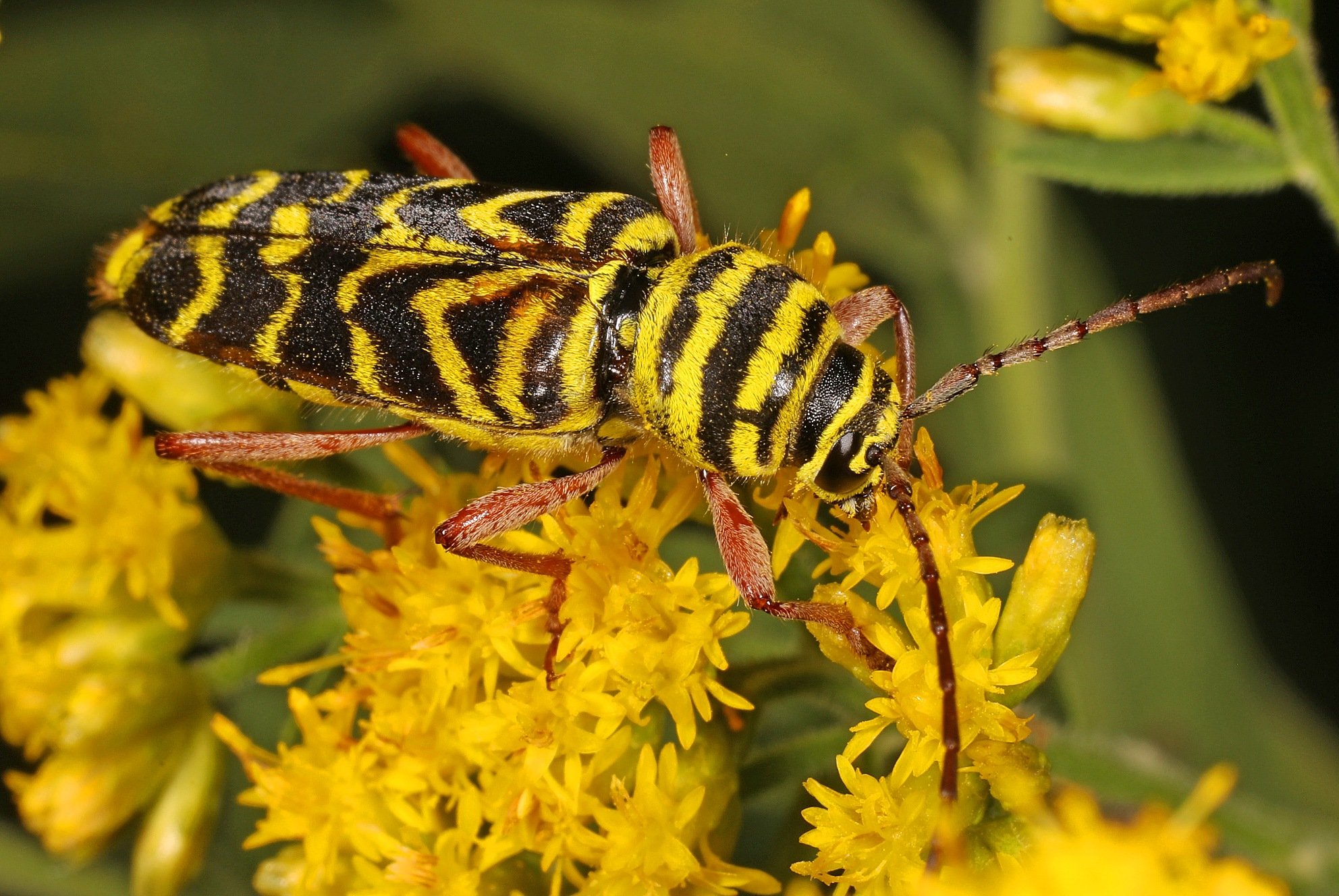Photo: Eastern Yellow Jacket, Judy Gallagher
Judy Gallagher is an ASNV board member and a regular surveyor of local wildlife who also captures photos of what she sees, in particular the less common species.
Last month's column was on social wasps, which, as most of you already know, will sting when they feel threatened. In particular, yellow jackets' distinctive coloration warns that they should not be messed with. But a number of other sting-free insects mimic yellow jackets and gain protection from predation because they look like yellow jackets, and most predators know to leave them alone.
Eastern Yellow Jacket, Judy Gallagher
Here's an Eastern Yellow Jacket (above), looking rather innocent on a flower. But if I threatened it, it would not hesitate to attack me.
Hover Fly, Spilomyia longicornis, Judy Gallagher
And here is a Flower Fly or Hover Fly (above), Spilomyia longicornis, looking very much like a yellow jacket and counting on predators thinking that it is a yellow jacket. Look at it closely: the short antennae make it obvious that it is not a wasp, but it extends its front legs to mimic wasp antennae.
Yellow Jacket Hover Fly, Milesia virginiensis, Judy Gallagher
There are many other flower flies that mimic yellow jackets, including the Virginia Hoverfly, also known as the Yellow Jacket Hover Fly. It buzzes loudly and acts aggressive, demonstrating that sometimes a good offense is the best defense.
Locust Borer, Judy Gallagher
But flies are not the only insects that mimic yellow jackets. This is a Locust Borer (above), a long-horned beetle. It spends most of its adult life harmlessly feeding on Goldenrod pollen. But it looks like a wasp and has evolved to smell like a wasp, so the mimicry protection is both visual and chemical. I often see Locust Borers and wasps on Goldenrod together, which may enhance the protective disguise.
Raspberry Crown Borer, Judy Gallagher
Sesiidae Family moths, also known as clearwing moths, mimic wasps, although many of them mimic paper wasps rather than yellow jackets. This is a Raspberry Crown Borer (above), a pest of raspberries and blackberries in its larval stage. Note that, unlike most moths, it doesn't have scales on its wings. This makes it look much more like a wasp than a moth. And unlike most moths, this moth flies during the day, when yellow jackets also fly. It doesn't have the pinched waist of a wasp and the antennae are not wasp-like, but when I originally took this picture at Occoquan Regional Park, I thought I was taking a picture of a yellow jacket. Some moths mimic wasp behavior, looking like wasps when they fly, which protects them from predators that don't like wasps, and also from other wasps!
Leaf Cutter Bee, Anthidium manicatum, Judy Gallagher
And finally, there are bees that resemble yellow jackets. Unlike yellow jackets that can sting multiple times, bee stingers detach, which kills the bee. They therefore use this defense sparingly. This is a non-native Leafcutter Bee, Anthidium manicatum, but it looks like a wasp until you examine it closely.
So, the next time you see one of those dreaded yellow jackets, look closely; you might be in for a non-stinging surprise.
View more of Judy’s Observations from Meadowood articles here.







